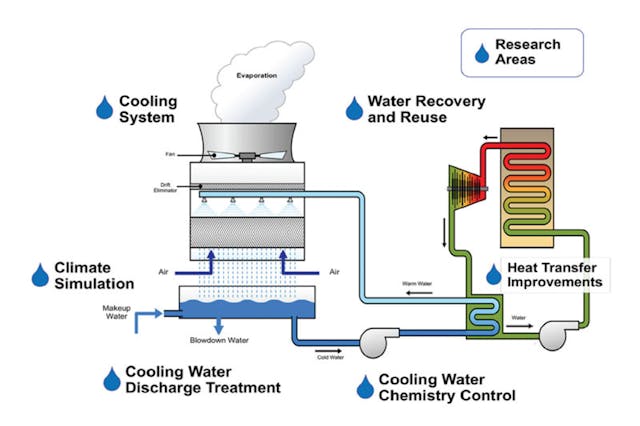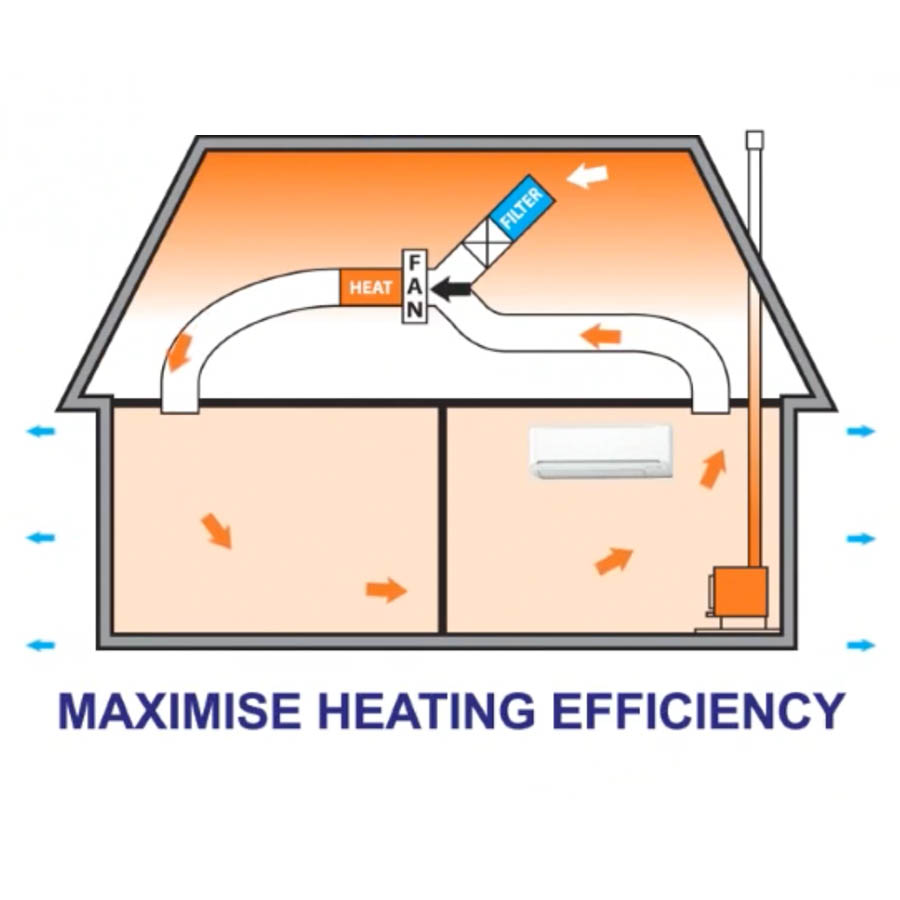Exploring the Potential of DVS Heat Transfer Systems in Modern Thermal Management
The Function of Heat Transfer Equipments in Sustainable Energy Solutions for the Future
Heat transfer systems are important in the quest for lasting power options. They optimize thermal energy management, boosting the effectiveness of renewable modern technologies. By using systems like convection, radiation, and transmission, these systems minimize power losses. Their function in solar thermal and geothermal applications is particularly considerable. As advancements emerge, the potential for additional advancements elevates essential inquiries about future power techniques. What developments will shape the landscape of lasting power?
Comprehending Heat Transfer Systems

The Importance of Thermal Energy Monitoring
Reliable thermal energy monitoring is vital for optimizing energy efficiency and minimizing waste in various systems. By managing temperature and maximizing Heat transfer procedures, companies can considerably minimize energy intake and operational prices. Efficient administration includes the implementation of advanced technologies and methods that check and manage thermal problems within systems, guaranteeing that energy sources are used successfully. In enhancement, appropriate thermal energy management contributes to minimizing greenhouse gas discharges, straightening with global sustainability goals. It also enhances system reliability and efficiency, leading to improved product quality and longer equipment lifespan. Ultimately, prioritizing thermal energy administration is a crucial step in the direction of producing much more sustainable energy services and promoting a responsible technique to energy usage in commercial and property contexts.
Applications of Heat Transfer in Renewable Resource
While various renewable resource sources assure sustainability, the reliable application of Heat transfer plays an essential duty in their performance. In wind power systems, Heat transfer is utilized for generator part air conditioning, improving performance and longevity. Geothermal power counts on efficient Heat exchange in between the earth's subsurface and the fluid flowing in the system, making best use of energy extraction. Biomass power procedures also benefit from Heat transfer, as it helps in converting natural products into functional fuel with pyrolysis and gasification. In addition, in hydropower, preserving excellent temperature levels in tanks can improve power output. Each of these applications shows the essential value of Heat transfer systems in enhancing eco-friendly power technologies, inevitably contributing to an extra sustainable energy future.
Enhancing Solar Thermal Power Effectiveness
As solar thermal power systems remain to evolve, boosting their effectiveness has actually ended up being important for making the most of power output. Advances in Heat transfer modern technologies, such as improved thermal storage space products and ingenious Heat exchangers, play a considerable duty in improving efficiency. By making use of sophisticated materials that have remarkable thermal conductivity, systems can capture and transfer Heat better. Additionally, integrating tracking systems that comply with the sunlight's course warranties that collection agencies receive suitable solar exposure throughout the day. Making use of nanotechnology in solar absorbers can additionally enhance energy absorption rates. Integrating computerized control systems helps handle and control temperatures energy distribution efficiently, leading to minimized losses and enhanced overall system efficiency. These enhancements pave the means for even more sustainable solar thermal energy services in the future.
Geothermal Heating: A Sustainable Solution
Geothermal home heating offers a viable option for sustainable power, using significant ecological advantages with decreased greenhouse gas emissions. Its efficiency and cost-effectiveness make it an attractive choice to typical home heating systems. Nevertheless, challenges associated with execution has to be dealt with to maximize its prospective influence.
Environmental Benefits of Geothermal
Standard heating techniques add substantially to greenhouse gas discharges, geothermal heating offers a compelling option that minimizes ecological impact. By using the Planet's inner Heat, geothermal systems use a renewable power resource, substantially decreasing reliance on nonrenewable fuel sources. This approach generates very little carbon discharges, making it a cleaner alternative for industrial and property heating. In addition, geothermal systems advertise energy efficiency, as they require less energy compared to traditional heating systems. DVS Heat Transfer Systems. The use of geothermal power likewise aids in decreasing air pollution, boosting regional air quality and public health and wellness. As a lasting option, geothermal home heating sustains environment adjustment reduction initiatives, Continued placing itself as a necessary component in the shift towards a greener future
Efficiency and Cost-Effectiveness
How does geothermal home heating gauge up in terms of effectiveness and cost-effectiveness compared to standard heater? Geothermal home heating shows remarkable performance, frequently accomplishing a coefficient of efficiency (POLICE) of 3 to 5, suggesting it generates three to five units of Heat for every unit of electrical energy eaten. This effectiveness translates right into reduced operating expense, specifically in regions with stable geothermal resources. First installment expenses can be higher than standard systems; nonetheless, long-lasting savings on power expenses and reduced upkeep costs can offset these ahead of time investments. Furthermore, lots of federal governments incentivize geothermal systems via discounts and tax obligation credit scores, improving their cost-effectiveness. In general, geothermal home heating becomes a sustainable and economically feasible option to more standard heating options.
Implementation Obstacles and Solutions
Numerous difficulties can impede the extensive implementation of geothermal heater, regardless of their clear advantages as a sustainable power service. High preliminary installation expenses frequently deter go now property owners and capitalists, making financing a considerable obstacle. In addition, the geographical limitations of appropriate geothermal websites limit availability in particular areas. Local policies and permitting processes can likewise make complex job growth, resulting in hold-ups. In addition, public recognition and understanding of geothermal systems remain low, impeding approval. To address these obstacles, targeted education campaigns can improve open secret, while government motivations can reduce economic burdens. Teaming up with local authorities to improve policies may promote smoother job authorizations, eventually promoting the adoption of geothermal heating as a practical, sustainable energy option.
Technologies in Heat Transfer Technologies
Technologies in Heat transfer modern technologies play a vital duty in boosting power effectiveness and sustainability. Advanced Heat exchangers and phase change materials go to the leading edge of these advancements, providing substantial renovations in thermal administration. These innovations not only optimize power usage but also contribute to lowering ecological impact in different applications.
Advanced Heat Exchangers
Advanced Heat exchangers play an important role in boosting energy efficiency throughout different applications in sustainable power services. These devices assist in the transfer of Heat in between 2 or even more fluids, significantly minimizing energy intake in processes such as commercial heating, air conditioning, and power generation. Advancements in materials and design, such as using nanofluids and small arrangements, have actually resulted in boosted thermal efficiency and decreased dimension needs. In addition, advancements in digital tracking and control systems permit optimized procedure, further enhancing performance. By reducing waste Heat and maximizing power recovery, advanced Heat exchangers add to decrease carbon footprints and support the change towards ecologically pleasant technologies. Their continued advancement is essential for achieving worldwide power sustainability objectives.
Stage Modification Materials
The assimilation of phase modification products (PCMs) right into Heat transfer innovations stands for a significant improvement in power management and effectiveness. PCMs take in and launch thermal power throughout their stage modifications, making it possible for effective temperature level policy in building materials and energy systems. By keeping excess Heat Your Domain Name throughout optimal durations and launching it when need rises, PCMs add to load shifting and energy conservation - DVS Heat Transfer Systems. This capacity boosts the efficiency of renewable resource systems, specifically in solar thermal applications. In addition, PCMs can boost the thermal convenience of interior environments, minimizing reliance on traditional home heating and cooling down techniques. As advancements in PCM solutions proceed to arise, their duty in lasting power services is poised to expand, providing encouraging opportunities for future research and application

Future Leads for Heat Transfer in Sustainable Energy
As the demand for lasting energy services proceeds to climb, the role of Heat transfer systems is coming to be significantly crucial in forming future modern technologies. Developments in materials and styles are anticipated to enhance performance in Heat transfer, reducing power losses in numerous applications. The assimilation of advanced thermal storage systems, such as phase change materials and thermochemical storage, will enable much better monitoring of power resources. Study into nanofluids and biomimetic Heat exchangers may further optimize thermal performance. The adoption of clever modern technologies will certainly permit for real-time surveillance and flexible control of Heat transfer procedures. These advancements are positioned to significantly add to the total performance and sustainability of energy systems, paving the means for an extra energy-efficient future.
Regularly Asked Concerns
Exactly How Can Individuals Carry Out Heat Transfer Systems in the house?

People can implement Heat transfer systems in the house by setting up energy-efficient home appliances, utilizing radiant heat, and optimizing insulation. These actions enhance power efficiency, reduce prices, and promote lasting techniques in property environments.

What Are the Prices Connected With Installing Heat Transfer Systems?
The costs connected with setting up Heat transfer systems differ widely, generally encompassing equipment, installation labor, and upkeep. Factors such as system kind, home dimension, and neighborhood guidelines substantially affect the overall expense involved.
Exist Federal Government Motivations for Heat Transfer System Installations?
Government motivations for Heat transfer system installations differ by area and can include tax credits, discounts, and gives. These financial advantages aim to encourage fostering, ultimately advertising energy efficiency and minimizing ecological effect within areas.
Just How Do Heat Transfer Systems Effect Energy Bills?
Heat transfer systems notably affect energy expenses by optimizing power efficiency. By boosting the transfer of Heat, these systems reduce energy consumption, leading to reduced utility prices and developing a much more lasting approach to energy administration.
What Upkeep Is Needed for Heat Transfer Equipments?
Maintenance for Heat transfer systems consists of regular assessments, cleansing of elements, checking fluid degrees, making sure correct insulation, and replacing worn parts. These tasks assist keep performance, prevent malfunctions, and lengthen the system's operational life expectancy.
These systems promote the movement of thermal energy from one medium to one more, allowing the transfer of Heat for energy, cooling, or heating generation functions. Geothermal power depends on effective Heat exchange between the earth's subsurface and the fluid distributing in the system, taking full advantage of energy removal. Furthermore, geothermal systems advertise energy efficiency, as they call for much less power contrasted to conventional heating systems. Advanced Heat exchangers play a vital function in boosting energy performance across various applications in sustainable power remedies. Heat transfer systems especially affect power costs by maximizing power effectiveness.